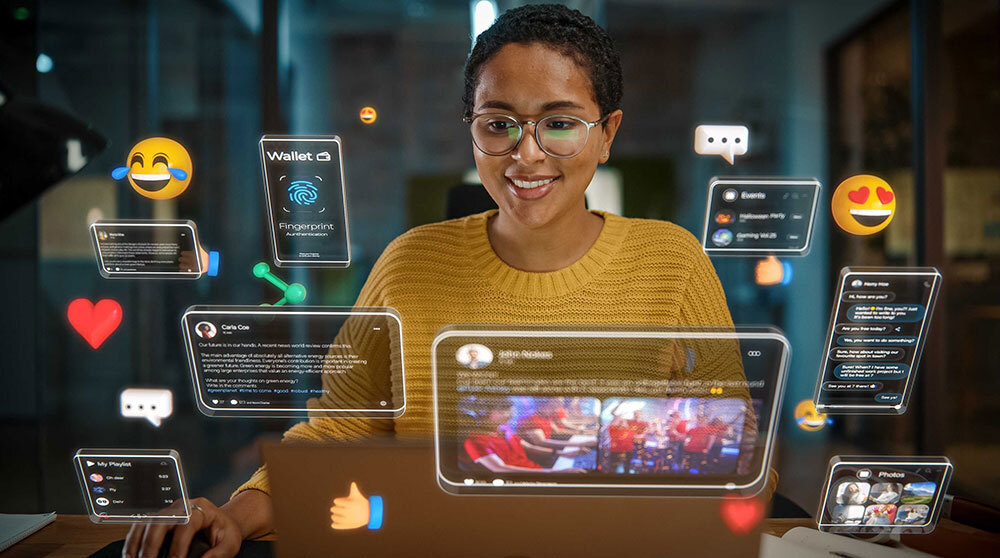In the ever-evolving world of apps, ensuring that users stay engaged is like fuel for success. This blog dives into the secrets of maintaining user engagement, focusing on a user-friendly approach that can be understood by app developers, product managers, marketers, and enthusiasts alike.
Understanding Users
When you're developing an app, it's important to put users at the center of the process. This means understanding what they want and need from your app, and designing it with their needs in mind.
There are a few things you can do to understand your users:
-
Talk to them: The best way to understand what users want is to talk to them directly. Ask them about their pain points, what they like and dislike about other apps, and what they would like to see in a new app.
-
Do your research: There is a lot of information available online and in libraries about user behavior and preferences. Read up on user-centered design and usability testing to learn more about how to design mobile apps that are user-friendly and effective.
-
Look at your competition: What are other apps in your category doing well? What are they doing poorly? What can you learn from their successes and failures?
Once you have a good understanding of your users, you can start to design your app with their needs in mind. Here are a few things to keep in mind:
-
Make it easy to use: Users should be able to figure out how to use your app quickly and easily. The user interface should be clear and concise, and the navigation should be logical.
-
Be relevant to your users: The features and content of your app should be relevant to the needs of your target users. If your app is not relevant, users will quickly lose interest.
-
Keep it updated: As users' needs change, you need to keep your app updated with new features and content. This will help to keep users engaged and coming back for more.
Getting Inside the User's Mind: Decoding Behavior
Have you ever wondered how people use your app? What are their pain points? What do they like and dislike? If you want to create a successful app, it's important to understand user behavior.
There are a few tools and tricks you can use to decode user behavior:
-
User analytics: User analytics tools can track how users interact with your app. This data can tell you things like which features are popular, how long users spend in your app, and where they drop off.
-
Heatmaps: Heatmaps show you where users click and tap on your app's screen. This data can help you identify areas of your app that are confusing or frustrating to users.
-
Session recordings: Session recordings allow you to watch videos of real users as they interact with your app. This data can give you a first-hand look at how users use your app and identify any potential problems.
Once you have collected data on user behavior, you can use it to make smart choices that users will love. For example, you can use data to:
-
Improve the user interface: If you see that users are clicking on the wrong buttons or getting lost in your app, you can make changes to the user interface to make it more intuitive.
-
Add new features: If you see that users are asking for new features, you can add them to your app to keep them engaged.
-
Fix bugs: If you see that users are reporting bugs, you can fix them to improve the user experience.
Creating an Awesome User Experience
User experience (UX) matters big time. We'll share simple tricks to make users smile while using your app. From making it easy to navigate to having a sleek design, we'll uncover the secret recipe for a top-notch UX.
Making It Personal
This is the power of personalization. When an app knows you, it can provide a more relevant and engaging experience. This can lead to increased user satisfaction, engagement, and retention.
There are many ways to personalize an app. Here are a few examples:
-
Recommendations: Apps can recommend content or features that are likely to be of interest to the user. For example, a music app could recommend songs that are similar to the ones the user has listened to in the past.
-
Personalization settings: Apps can allow users to customize the look and feel of the app to their own preferences. For example, a news app could allow users to choose their favorite news sources and the order in which they appear.
-
Context-aware features: Apps can use context to provide a more relevant experience. For example, a weather app could show the user the weather forecast for their current location.
-
Behavioral targeting: Apps can track user behavior and use this information to personalize the experience. For example, an e-commerce app could show the user products that they have viewed in the past.
-
Personalization: is a powerful tool that can be used to create more engaging and useful apps. By taking the time to understand your users and their needs, you can create an app that feels like it was made just for them.
The User Connection
The user connection is the relationship between a user and an app. It is the foundation of a successful app experience. When users feel connected to an app, they are more likely to use it regularly and to recommend it to others.
There are many things that can contribute to a strong user connection. Here are a few key factors:
-
A great user experience: Users need to be able to use an app easily and intuitively. The user interface should be clear and concise, and the navigation should be logical.
-
Relevant content and features: The app should provide content and features that are relevant to the user's interests and needs. This can be achieved by using personalization techniques to tailor the experience to the individual user.
-
A sense of community: Apps can create a sense of community by allowing users to connect with each other. This can be done through features such as chat, forums, and groups.
-
Personalization: Apps can personalize the experience by using data to learn about the user's interests and preferences. This can be done by tracking user behavior, collecting user feedback, and using artificial intelligence.
-
Engaging content: Apps need to provide content that is engaging and interesting to users. This can be achieved through features such as games, quizzes, and interactive experiences.
Communication and Feedback: The Key to App Success
Communication and feedback are essential for the success of any app. By establishing communication channels with users, app developers can gather feedback that can be used to improve the app and increase engagement.
Here are some of the benefits of establishing communication channels with users:
-
Improved app quality: User feedback can be used to identify and fix bugs, improve the user interface, and add new features that users want. This can lead to a better overall app experience that users will enjoy.
-
Increased user engagement: When users feel like their feedback is being heard and taken seriously, they are more likely to be engaged with the app. This can lead to increased usage and retention.
-
Better understanding of users: By listening to user feedback, app developers can get a better understanding of who their users are and what they want. This information can be used to improve the app and make it more relevant to users.
-
Build trust and loyalty: When users feel like they can communicate with app developers and have their feedback taken seriously, they are more likely to trust and be loyal to the app. This can lead to increased sales and revenue.
Implementing Gamification: The Key to Engaging Users
Gamification is the use of game-like elements in non-game contexts. It can be a powerful tool for increasing user engagement and motivation.
There are many ways to implement gamification in apps. Here are a few examples:
-
Points and rewards: Users can earn points for completing tasks or reaching goals. These points can then be redeemed for rewards, such as virtual badges, new levels, or access to exclusive content.
-
Leaderboards: Users can compete with each other to climb leaderboards and earn bragging rights. This can add a competitive element to the app and motivate users to keep coming back.
-
Progress bars: Progress bars can be used to track user progress towards a goal. This can help users stay motivated and on track.
-
Levels and achievements: Users can progress through levels and earn achievements as they complete tasks. This can give users a sense of accomplishment and motivation to keep playing.
-
Challenges: Users can be challenged to complete specific tasks or goals. This can add a sense of urgency and excitement to the app.
Gamification can be a very effective way to increase user engagement and motivation. By incorporating game-like elements into your app, you can create an experience that is more fun and engaging for users. This can lead to increased usage, retention, and even revenue.
Push Notifications and App Updates
Push notifications are a powerful tool for re-engaging users and promoting app updates. They can be used to:
-
Remind users about your app: If users haven't opened your app in a while, a push notification can remind them that it's there.
-
Notify users of new features or updates: Push notifications can be used to notify users of new features or updates that have been added to your app.
-
Offer discounts or promotions: Push notifications can be used to offer discounts or promotions to users, which can encourage them to open your app and make a purchase.
-
Promote your app on social media: Push notifications can be used to promote your app on social media, which can help you to reach new users.
Embracing Excellence: A Winning Conclusion
In the world of apps, user engagement is the secret sauce. By taking a user-centered path, app creators can light up their apps and keep users coming back for more. From understanding users to creating a fantastic experience, these ideas are a guide to app greatness. So, whether you're a developer, manager, or just an app enthusiast, it's time to unlock the magic of user engagement and let your apps shine with Flynaut - The best app development company in USA.






























